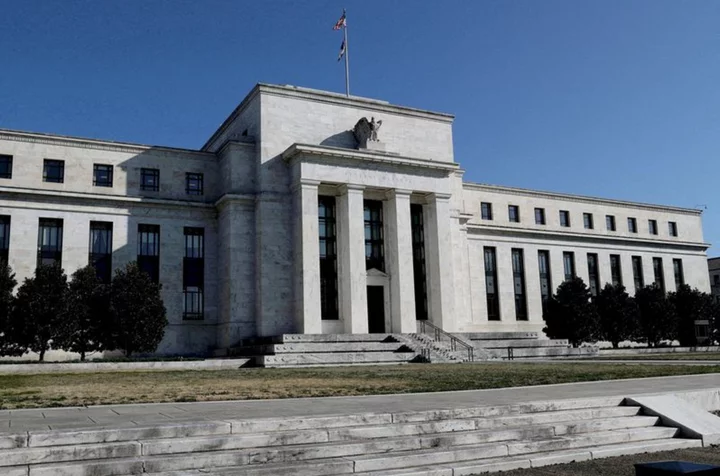By Howard Schneider
WASHINGTON New data from the New York Federal Reserve shows underlying inflation may have slowed faster than the headline measures that have kept U.S. central bank officials poised for further interest rate increases.
In a research series that is now due for monthly release, the New York Fed's so-called "multivariate core trend" measure of inflation stood at 3.5% in May, far lower than the 4.6% rate of increase for the personal consumption expenditures price index stripped of its volatile food and energy components.
A 68% probability band puts the number at near 3% at the low end, with the highest point still below 4%, possible evidence that prices may be moving more steadily towards the Fed's 2% target than thought.
The New York Fed core trend also factors out the food and energy items that central bankers try to look beyond in assessing the direction of inflation. But it goes a step further and tries to filter out temporary shocks or price influences across the full spectrum of goods and services -- such as the outsized demand for autos and other goods at the start of the pandemic.
The resulting model "gives more weight to sectors that have relatively few transitory shocks and less weight to sectors that have large amounts of noise," New York Fed staffers wrote in a short blog post describing the research series, which is due to be updated monthly on the Tuesday after the release of each month's PCE inflation data.
As examples they cite motor vehicles as a category that tends to be more susceptible to fleeting up and down price movements, and were also a key driver of early pandemic inflation.
Housing, the staffers noted, is by contrast one of the "high signal value" items that gets more weight in the model and has recently been pulling the New York Fed's index lower than the headline core PCE number. That's because recent data on rents, which have been moderating, gets incorporated faster into the New York Fed's estimates.
From a monetary policy perspective, the new estimate could add fodder to arguments for being more cautious about further rate increases. Some policymakers have been concerned that the main measure of core inflation has shown little improvement; the New York Fed's alternate measure suggests that may be the result of temporary factors rather than a more persistent trend.
The Fed, after holding rates steady at its June meeting, is expected to increase the benchmark policy rate by another quarter of a percentage point at its next meeting, with officials concerned about the slow progress of inflation back towards the 2% goal.
(Reporting by Howard Schneider; Editing by Chizu Nomiyama)

